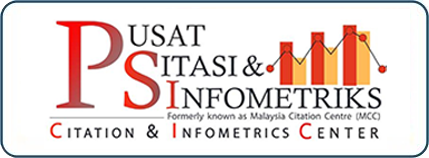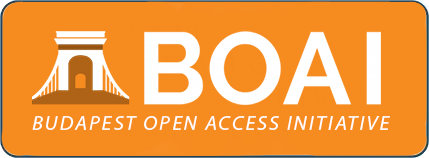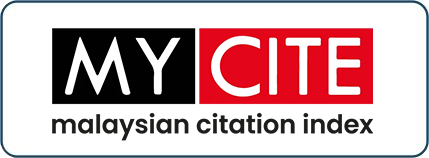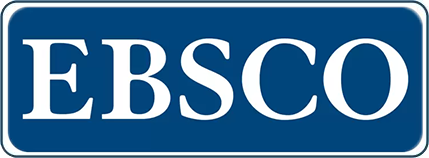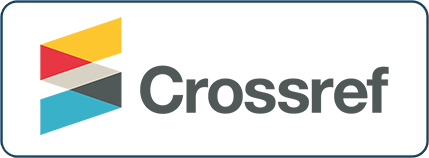Halalan Thayyiban Natural Antidiabetic For A Healthy Life
DOI:
https://doi.org/10.33102/jfatwa.vol30no3.663Keywords:
Halalan, Thayyiban, Natural, Antidiabetic, Alpha-AmylaseAbstract
Type II diabetes is a one of the types of Diabetes Mellitus (DM) that are commonly occurring in diabetic patients worldwide. It is a condition that happens due to the inability of the body to regulate and use simple sugar (glucose) as fuel or source of energy to the body and would later lead to an increase in blood sugar level. Citrus hystrix or also known as Kaffir lime, is one of the most common citrus fruits in the Southeast Asian region that is known to have an antidiabetic potential. Consequently, this research aims to investigate the usage of Kaffir lime as a natural as well as Halalan Thayyiban antidiabetic alternatives for patients suffering from Type II Diabetes in lowering their blood sugar content. In Brunei Darussalam, most cases of DM are related to Type II Diabetes. This can be caused by the unhealthy lifestyle and unbalanced diet of many of the local citizens which are already suffering from overweight and obesity. This study has been reviewing secondary data such as books, journals and articles of other researchers of the same or similar field of research or topic as a source of reference and data collection. The findings show that Kaffir lime can be a good source of antidiabetic alternatives for diabetic patients as it is naturally occurred and Halalan Thayyiban. The phytochemical contents of the Kaffir lime which include such as flavonoids is proved to have an effective impact towards inhibiting the activity of alpha-amylase enzyme, an enzyme that catalyses the digestion of starch into simple sugars such as glucose. This could help diabetic patients to regulate their blood glucose levels accordingly with the correct amount of Kaffir lime extract intake.
Downloads
References
Abirani, A., Nagarani, G., & Siddhuraju, P. (2014a). Measurement of functional properties and health promoting aspects-glucose retardation index of peel, pulp and peel fiber from Citrus hystrix and Citrus maxima. Bioactive Carbohydrates and Dietary Fibre, 4(1), 16–26.
Abirani, A., Nagarani, G., & Siddhuraju, P. (2014b). In vitro antioxidant, anti-diabetic, cholinesterase and tyrosinase inhibitory potential of fresh juice from Citrus hystrix and C. maxima fruits. Food Science and Human Wellness, 3(1), 16–25.
Al-Quran al-Kareem. (n.d.). Retrieved June 14, 2024, from https://quran.com/6/141?translations=20,83,84,17,85,18,95,101,41,31,19,22,28
Al-Quran al-Kareem. (n.d.). Retrieved September 15, 2024, from https://quran.com/en/al-araf/157
Al-Qurtubi, A. M. (2013). Al-Jami’ li ahkam al-Quran.
Amin, N. S. S., Tusidan, N. A. M., & Badarudin, N. E. (2023). Exploring the traditional therapy for cataract based on the Malay medical manuscript: A scoping review. International Journal on Integration of Knowledge, 1(1), 12–26.
Anuar, F. N., Mamat, M. N., & Tumiran, M. A. (2024). The Importance Of Halalan Tayyiban In Food Consumption Among Adolescents: A Conceptual Analysis . Al-Qanatir: International Journal of Islamic Studies, 33(4), 199–207. Retrieved from https://al-qanatir.com/aq/article/view/944
As-Suyuti, A. R. J. (1983). Al-Ashbah wa an-nazair fi qawaid wa furu’ fiqh Syafie. Darul Kutub al-Ilmiyyah.
Bhatia, A., Singh, B., Arora, R., & Arora, S. (2019). In vitro evaluation of the α-glucosidase inhibitory potential of methanolic extracts of traditionally used antidiabetic plants. BMC Complementary and Alternative Medicine, 19(1), 1–11. https://doi.org/10.1186/s12906-019-2482-z
Bora, H., Kamle, M., Mahato, D. K., Tiwari, P., & Kumar, P. (2020). Citrus essential oils (CEOs) and their applications in food: An overview. Plants, 9(3), 357. https://doi.org/10.3390/plants9030357
Borneo Bulletin. (2023). Diabetes a challenge for Brunei healthcare, economy. Retrieved June 15, 2024, from https://borneobulletin.com.bn/diabetes-a-challenge-for-brunei-healthcare-economy/
Budiarto, R., Poerwanto, R., Santosa, E., & Efendi, D. (2021). Morphological evaluation and determination keys of 21 citrus genotypes at seedling stage. Biodiversitas Journal of Biological Diversity, 22(3), 1570–1579.
Budiarto, R., Wathoni, N., Mubarok, S., Hamdani, J. S., Ujilestari, T., Darsih, C., ... & Sholikin, M. M. (2024). Recent overview of kaffir lime (Citrus hystrix DC) dual functionality in food and nutraceuticals. Journal of Agriculture and Food Research, 101384. https://doi.org/10.1016/j.jafr.2024.101384
de la Garza, A. L., Milagro, F. I., Boque, N., Campión, J., & Martínez, J. A. (2011). Natural inhibitors of pancreatic lipase as new players in obesity treatment. Planta Medica, 77(8), 773–785. https://doi.org/10.1055/s-0030-1270924
Dewi, N. Y. S., & Agustina, A. (2021). Halalan Toyyiban: Theory and implementation of food products consumers. Indonesian Interdisciplinary Journal of Sharia Economics (IIJSE), 4(1), 179–189.
Global Burden of Disease Collaborative Network. (2020). Global Burden of Disease Study 2019 results. Retrieved June 14, 2024, from https://vizhub.healthdata.org/gbd-results/
Hasan, K., Setyawan, A. H., Abidin, M., Fathya, N. A., Handayani, D. R., Linasari, D., ... & Yusuf, M. (2023). Comparative assessment of human salivary α-amylase inhibitor from Indonesian herbs. Jurnal Pendidikan Kimia, 15(3), 176–181. https://doi.org/10.24114/jpkim.v15i3.51153
Hinkaew, J., Aursalung, A., Sahasakul, Y., Tangsuphoom, N., & Suttisansanee, U. A. (2021). Comparison of the nutritional and biochemical quality of date palm fruits obtained using different planting techniques. Molecules, 26(8), 2217. https://doi.org/10.3390/molecules26082217
Ibn Nujaym, M. Z. I. (1999). Al-Ashbah wa an-nazair ‘ala madzhab Abi Hanifah an-Nu’man (1st ed.). Darul Kutub al-Ilmiyyah.
International Diabetes Federation. (2020). IDF Diabetes Atlas 2019. Retrieved June 14, 2024, from https://diabetesatlas.org/resources/
Irawaty, W., & Ayucitra, A. (2018). Assessment on antioxidant and in vitro antidiabetes activities of different fractions of Citrus hystrix peel. International Food Research Journal, 25(6), 2467–2477.
Kumari, S., Bhowal, R., & Suprasanna, P. (2023). Sustainable approaches for biodiversity and bioprospecting of citrus. Sustainability, 15(9), 7731. https://doi.org/10.3390/su15097731
Latif, M. A., & Rahman, S. A. (2020). Knowledge and attitude on sunnah food and Islamic eating practices among students of Universiti Malaysia Sabah. Journal of Halal Industry & Services, 3(1), 1–7.
Le, X. T., Ha, P. T. H., Phong, H. X., Hien, T. T., & Ngan, T. T. K. (2020). Extraction of essential oils and volatile compounds of kaffir lime (Citrus hystrix DC) by hydrodistillation method. IOP Conference Series: Materials Science and Engineering, 991(1), 012024. https://doi.org/10.1088/1757-899X/991/1/012024
Lo Piparo, E., Scheib, H., Frei, N., Williamson, G., Grigorov, M., & Chou, C. J. (2008). Flavonoids for controlling starch digestion: Structural requirements for inhibiting human alpha-amylase. Journal of Medicinal Chemistry, 51(12), 3555–3561. https://doi.org/10.1021/jm800115x
Lubinska-Szczygeł, M., Kuczyńska-Łażewska, A., Rutkowska, M., Polkowska, Ż., Katrich, E., & Gorinstein, S. (2023). Determination of the major by-products of Citrus hystrix peel and their characteristics in the context of utilization in the industry. Molecules, 28(6), 2596. https://doi.org/10.3390/molecules28062596
Malboobi, M. T., & Malboobi, M. A. (2012). Halal concept and products derived from modern biotechnology. In International workshop for Islamic scholars on agribiotechnology: Shariah compliance (Vol. 22).
Marghich, M., Daoudi, N. E., Amrani, O., Addi, M., Hano, C., Chen, J.-T., Mekhfi, H., Ziyyat, A., Bnouham, M., & Aziz, M. (2022). Antioxidant activity and inhibition of carbohydrate digestive enzymes activities of Artemisia campestris L. Frontiers in Bioscience-Scholar, 14(4), 25. https://doi.org/10.31083/j.fbs1404025
Mazzoni, L., Ariza Fernández, M. T., & Capocasa, F. (2021). Potential health benefits of fruits and vegetables. Applied Sciences, 11(19), 8951. https://doi.org/10.3390/app11198951
Md Othman, S. N. A., Hassan, M. A., Nahar, L., Basar, N., Jamil, S., & Sarker, S. D. (2016). Essential oils from the Malaysian citrus (Rutaceae) medicinal plants. Medicines, 3(2), 13. https://doi.org/10.3390/medicines3020013
Mahmoud, H. M., Abdel‐Razik, A. R. H., Elrehany, M. A., Othman, E. M., & Bekhit, A. A. (2024). Modified citrus pectin (MCP) confers a renoprotective effect on early‐stage nephropathy in type‐2 diabetic mice. Chemistry & Biodiversity, 21(7), e202400104. https://doi.org/10.1002/cbdv.202400104
Muhammad Haskani, N. H., Ming, L. C., Dhaliwal, J. S., Wee, D. V. T., Goh, B. H., Ali, M., ... & Goh, H. P. (2023). Diabetes mellitus and its therapy in Brunei Darussalam–A critical revisit. Patient Preference and Adherence, 17, 1131–1136. https://doi.org/10.2147/PPA.S411325
Nakazawa, Y., Aoki, M., Ishiwa, S., Morishita, N., Endo, S., Nagai, N., ... & Tamura, H. (2020). Oral intake of α-glucosyl hesperidin ameliorates selenite-induced cataract formation. Molecular Medicine Reports, 21(3), 1258–1266. https://doi.org/10.3892/mmr.2020.10909
Palazzolo, E., Laudicina, V. A., & Germanà, M. A. (2013). Current and potential use of citrus essential oils. Current Organic Chemistry, 17(24), 3042–3049. https://doi.org/10.2174/13852728113179990054
Palmer, S. (2021). Phytochemicals fight disease. Retrieved June 19, 2024, from https://sharonpalmer.com/phytochemicals-fight-disease/
Pattarachotanant, N., & Tencomnao, T. (2020). Citrus hystrix extracts protect human neuronal cells against high glucose-induced toxicity. Pharmaceuticals, 13(10), 1–27. https://doi.org/10.3390/ph13100307
Pérez-Nájera, V. C., Gutiérrez-Uribe, J. A., Antunes-Ricardo, M., Hidalgo-Figueroa, S., Del-Toro-Sánchez, C. L., Salazar-Olivo, L. A., & Lugo-Cervantes, E. (2018). Smilax aristolochiifolia root extract and its compounds chlorogenic acid and astilbin inhibit the activity of α-amylase and α-glucosidase enzymes. Evidence-Based Complementary and Alternative Medicine, 2018, 1–12. https://doi.org/10.1155/2018/6247306
Sapra, A., Bhandari, P., & Wilhite, A. (2024). Diabetes (Nursing). In StatPearls. StatPearls Publishing. Retrieved June 14, 2024, from https://www.ncbi.nlm.nih.gov/books/NBK551501/
Setyabudi, C., Tanda, S., Santosa, W. I., & Soetaredjo, F. E. (2018). Studi in vitro ekstrak kulit jeruk purut untuk aplikasi terapi diabetes melitus. Widya Teknik, 14(1), 15–19.
Siti, H. N., Mohamed, S., & Kamisah, Y. (2022). Potential Therapeutic Effects of Citrus hystrix DC and Its Bioactive Compounds on Metabolic Disorders. Pharmaceuticals, 15(2), 167. https://doi.org/10.3390/ph15020167
Suttisansanee, U., Thiyajai, P., Chalermchaiwat, P., Wongwathanarat, K., Pruesapan, K., Charoenkiatkul, S., & Temviriyanukul, P. (2021). Phytochemicals and in vitro bioactivities of aqueous ethanolic extracts from common vegetables in Thai food. Plants, 10(7), 1563. https://doi.org/10.3390/plants10081563
Umran, N. S. S., Mohamed, S., Lau, S. F., & Mohd Ishak, N. I. (2020). Citrus hystrix leaf extract attenuated diabetic-cataract in STZ-rats. Journal of Food Biochemistry, 44(11), e13477. https://doi.org/10.1111/jfbc.13477
Wolffenbüttel, A. N., Zamboni, A., Becker, G., Dos Santos, M. K., Borille, B. T., de Cássia Mariotti, K., ... & Limberger, R. P. (2018). Citrus essential oils inhalation by mice: Behavioral testing, GC-MS plasma analysis, corticosterone, and melatonin levels evaluation. Phytotherapy Research, 32(1), 160–169. https://doi.org/10.1002/ptr.5951
World Health Organization. (2023). Diabetes. Retrieved June 14, 2024, from https://www.who.int/news-room/fact-sheets/detail/diabetes
Zaharudin, W. M., Sungit, F., Azizan, N. I., & Mutalib, S. A. (2022). Parameter halalan tayyiban dari perspektif maqasid al-syariah dalam produk makanan enzim: The parameter of halalan tayyiban from maqasid al-syariah perspective in enzyme food products. Journal of Muwafaqat, 5(2), 16–32.
Downloads
Published
Issue
Section
License
Copyright (c) 2025 Mohammad Hasan Basri Haji Hanipah, Moohamad Ropaning Sulong

This work is licensed under a Creative Commons Attribution 4.0 International License.
The copyright of this article will be vested to author(s) and granted the journal right of first publication with the work simultaneously licensed under the Creative Commons Attribution 4.0 International (CC BY 4.0) license, unless otherwise stated.





